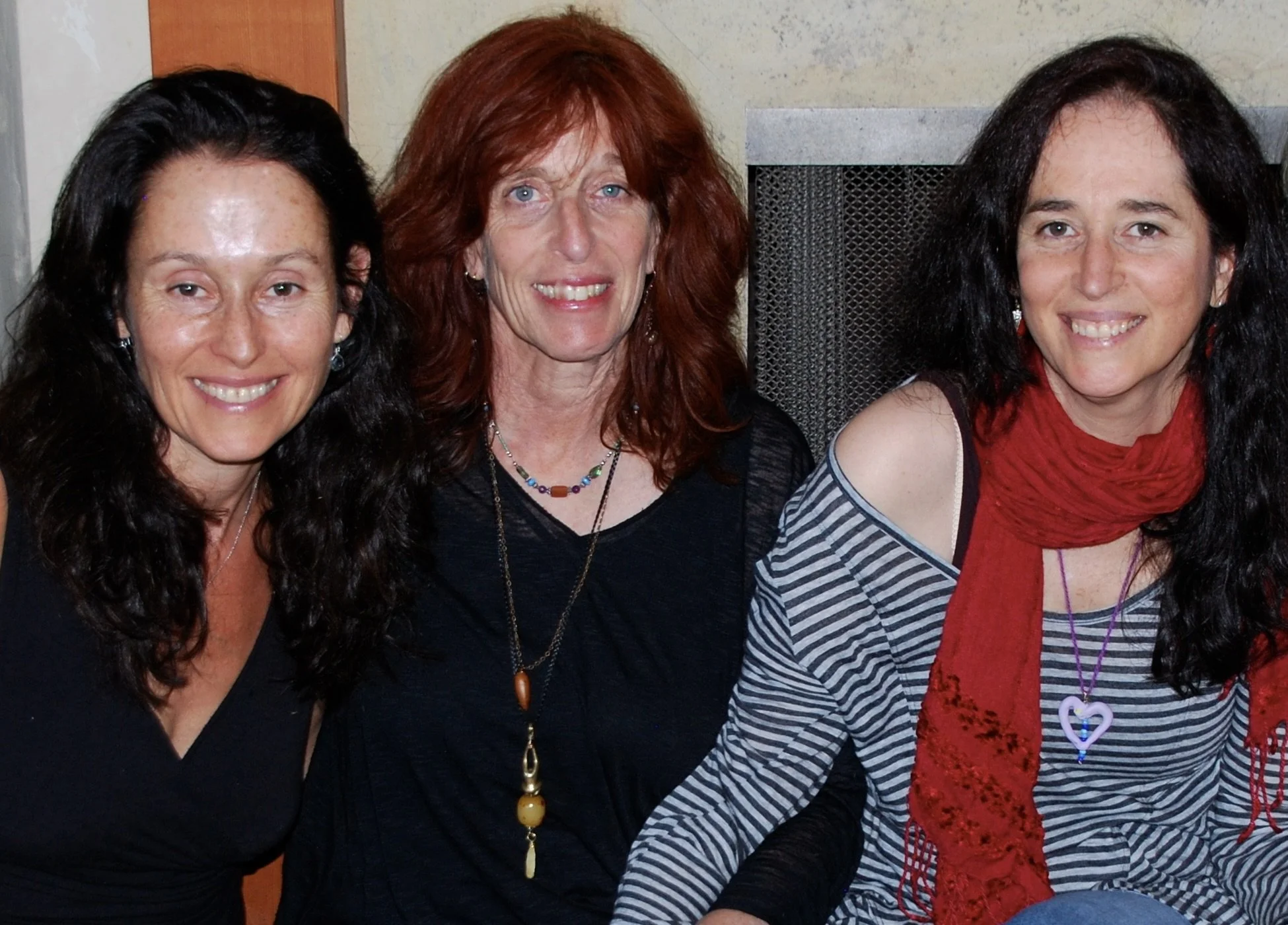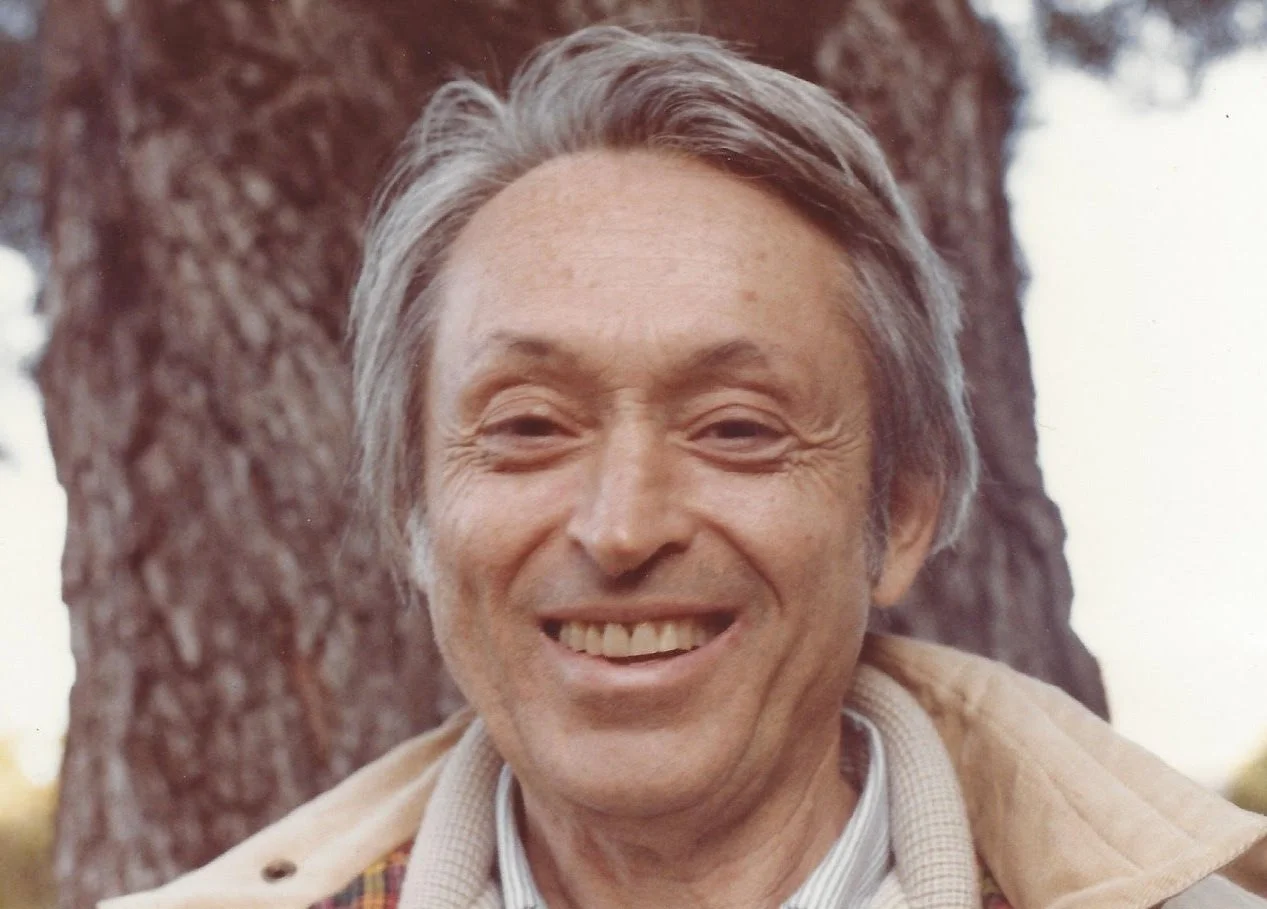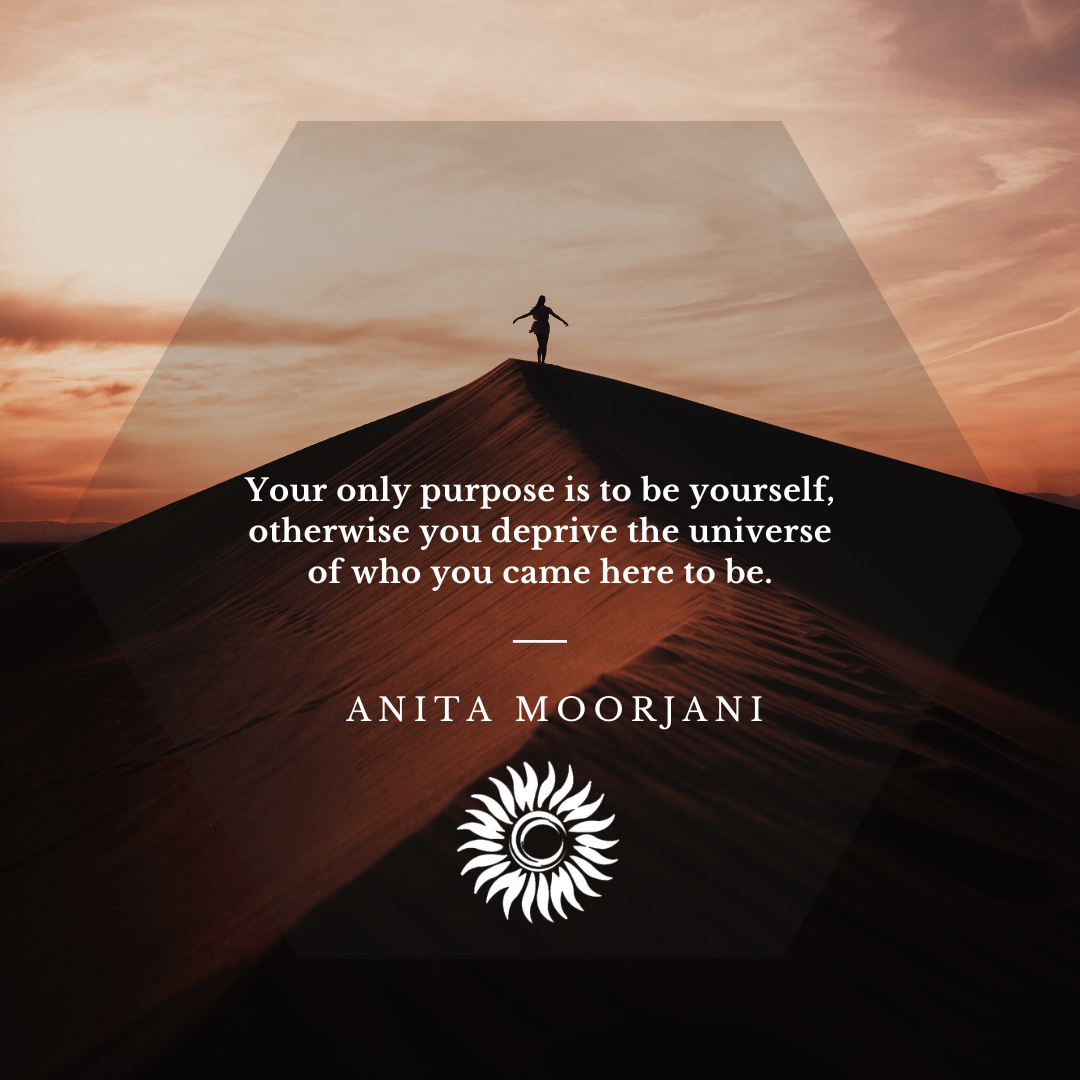Who Are You?
A quarter century ago, when I was in my early thirties, depleted by the constant demands of mothering two young children and a fast-growing business, I said goodbye to my family one Friday afternoon for a much-needed weekend break. Accompanied by my sister Ruthie and a close mutual friend, I drove deep into the Santa Cruz mountains, eager to attend a spiritual retreat led by the famous Buddhist teacher, Jack Kornfield.
Myra (left) with Ruthie (right) and mutual friend, Ellen Fondiler (2012)
The workshop didn’t disappoint. After two days of inspiring talks combined with powerful breathwork practices that opened hundreds of participants to higher states of consciousness, we gathered Sunday afternoon for the closing session. Jack sat on a low stage at the head of the lecture hall, while the rest of us perched on meditation cushions in concentric semicircles facing him. My sister and I were in the front row.
For the climactic exercise of the weekend, Jack asked us to find a partner, decide who would go first, and then look deeply into each other’s eyes. One person was instructed to slowly ask the other a single question until an answer spontaneously surfaced: “Who are you?”
Ruthie and I paired up. “Who are you? Who are you? Who are you?” my sister asked me, as I sat there blankly with no reply. “Who are you?” she continued over and over again. As the minutes passed, people all around us began sobbing, sharing cathartic revelations about their wounded inner child or true spiritual identity. Not me. I began to worry that I was taking too long, but Ruthie kept patiently repeating, “Who are you? Who are you? Who are you?”
Suddenly, words arose from the depth of my being, bypassing my discerning brain and taking both me and my sister by surprise, “I am someone who loves grilled sausage but never eats it.”
After staring at each other in shock for an instant, we burst out laughing. Everyone, including Jack, stopped and stared. Completely helpless to silence our guffaws, we ran out of the room, weaving through dozens of tear-streaked duos. Once outside, it took forever for our laughter to subside.
My revelation seemed as random as it was humorous. Grilled sausage was not something I ever thought about, yet liking it, but not eating it, was my deepest truth? After an entire weekend devoted to honest introspection, this is what emerged from the depth of my subconscious to illuminate my essential nature?
Although that unexpected upwelling had a lasting culinary impact (my family grilled up Italian sausage for dinner the following night, and it remains one of our favorite and most frequently served meals), at the time, I failed to understand the underlying meaning of my seemingly superficial answer.
Myra and her husband Drew with their children, Marea and Jeffrey, circa 1994.
Photo by Tom O’Neal
The truth is, back then I was so intensely focused on the outer world and what was required of me, I never paid sustained attention to what was going on inside of me. It would take twenty more years and a health crisis for me to begin to understand that “I am someone who loves grilled sausage but never eats it” actually meant, “I am someone who does not prioritize giving myself what I enjoy and what nourishes me.”
A Shortcut to Enlightenment
Now I know that learning how to nurture myself is one of my key life lessons, something that doesn’t come naturally to me. In fact, my challenge to master this essential life lesson is clearly outlined in my astrological birth chart, as is the most skillful way forward.
There is a point in everyone’s natal chart called the North Node. Debra Silverman—my good friend whose wonderful astrology school is where I began my astrological studies—refers to it as our “shortcut to enlightenment.” In a world view predicated on the belief that we all come into this life with lessons we’re meant to learn, our North Node illuminates and clarifies them for us. Just like the North Star’s role in nautical navigation, our North Node points us in the direction we’re meant to go for growth and balance, and aiming at it can keep us on track.
Our North Node lessons are opposite from those we learned in previous lives, which are marked by our South Node. Since ancient times, these two mathematically calculated points (also known as Lunar Nodes) are referred to as the head and the tail of the dragon. The head of the dragon (our North Node) signifies what we’ve come into this life to learn—patterns that are so new to us, they can feel foreign and difficult to embody. The tail of the dragon (our South Node) signifies what we’ve come into this life already knowing—abilities that are important, but come so naturally, we run the risk of over-emphasizing them. They can easily become our automatic default, especially when we’re tired, stressed or triggered.
The sign and position of my North Node (Cancer in the second house) signify that I am meant to learn how to slow down, tune into my emotions, connect with my physical senses, be patient, drop the drama, and nurture myself. Because my South Node is in Capricorn—the sign opposite Cancer that is known for being highly responsible, industrious and ambitious—it’s instinctive for me to work very hard, putting outer obligations and accomplishments ahead of my personal needs. In this life, I’m meant to learn how to embrace just being, versus always doing.
Although my South Node predispositions contributed to my business success when I was younger, leaning into these qualities for so long further reinforced them, which meant I never developed the beneficial habit of honoring my physical and emotional limitations. Now, my North Node is a clear and essential reminder that I need to cultivate new patterns that nurture my long-term health and emotional well-being.
These days, whenever I’m facing any type of challenge, I try to remember my North Node messages—slow down, be patient, drop the drama, feel my emotions, nurture myself—and when I do, my energy immediately shifts, and I feel more at ease and on track. My North Node wisdom balances many of my most prominent tendencies which are clearly illustrated in my birth chart: I have an exceptionally busy (and often scattered) mind; I love to be of service and have strong workaholic tendencies; I am very enthusiastic and frequently impulsive; and while most of me is wired to move fast and go big, my emotional body moves slowly and needs extra time to process and integrate feelings and events.
Back in my early 30s, when I could have answered the “Who am I?” question in countless different ways, my inner wisdom was doing its best to point me in the right direction. I needed to learn how to nurture myself with self-love and self-care as soon as possible, but I just wasn’t ready to wake up to this truth yet.
Essential Self-Inquiry
We don’t need to attend a Buddhist retreat or have an astrology reading to look within and ask ourselves “Who am I?” Upon reflection, I can see that the North Star of my father’s spiritual and emotional healing journey was constantly asking himself this essential question from many different perspectives.
Some of the questions my father frequently reflected upon included:
Who would I be if I’d been raised by a different family, in another country, speaking a different language, indoctrinated by a different religion?
Who would I be I if I’d been born eight inches shorter or taller?
Who am I independent of the many labels society has given me: Jew, immigrant, father, husband, successful businessman, etc.?
Who would I be if I lived freely, unconcerned about what other people thought of me?
Who was I before I was born? What parts of me are timeless?
In the past, I’ve always viewed my dad as someone who’d managed to overcome decades of fear and depression to become the happiest person I’ve ever known. But what I’m just beginning to appreciate is that my father never became a new person as a result of his healing journey—he just became more himself. As he healed his emotional wounds and re-trained his mind to cultivate joy, he was simply rediscovering and re-connecting with his true essence.
Myra’s father, Mendek Rubin, circa 1995
As Søren Kierkegaard wrote almost two hundred years ago, “The greatest hazard of all, losing oneself, can occur very quietly in the world, as if it were nothing at all. No other loss can occur so quietly…”
Just like the North Star serves as the anchor of the northern sky—a gift of guidance and direction to travelers on this planet since ancient times—regularly asking ourselves “Who Am I?” can keep us on course in our quest to come back home to ourselves. As my wise father wrote, “The most important thing I have ever done is to become an explorer of my mind and heart. I got to know myself as I really am, rather than who I imagined myself to be.”
Take a Moment Micro-Meditation
Tiny pauses to be right here, right now can have big results. Our Take a Moment series of micro-meditations—all under two minutes long—make taking mindful pauses as easy as possible. We invite you to "Take a Moment" to find the calm that is always within you.





